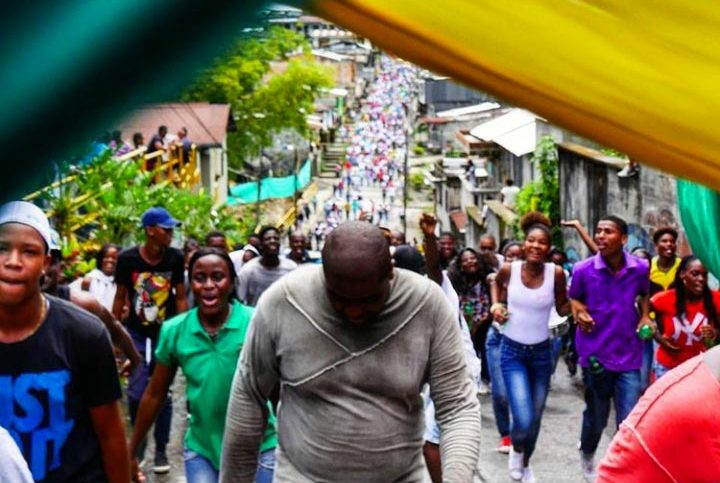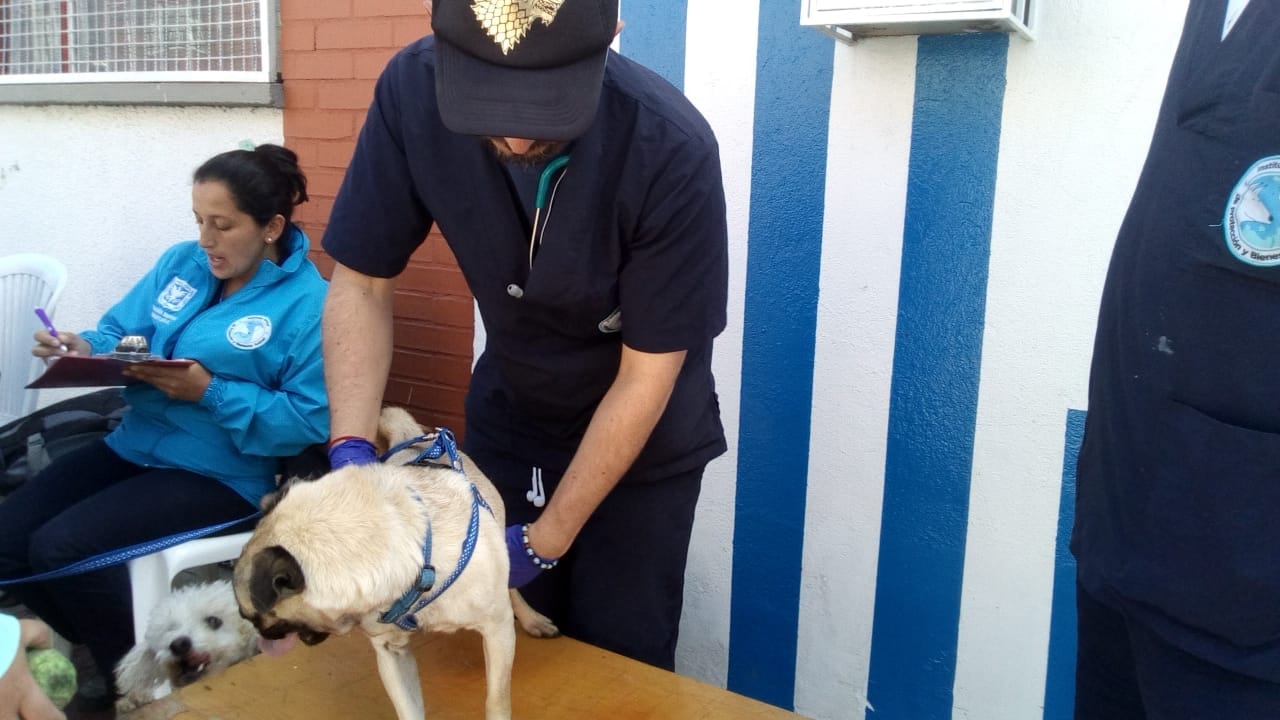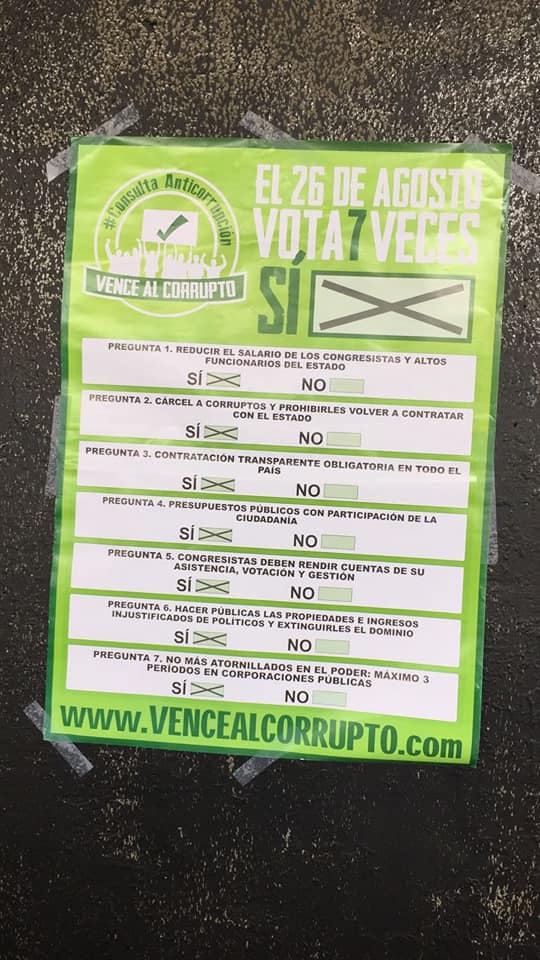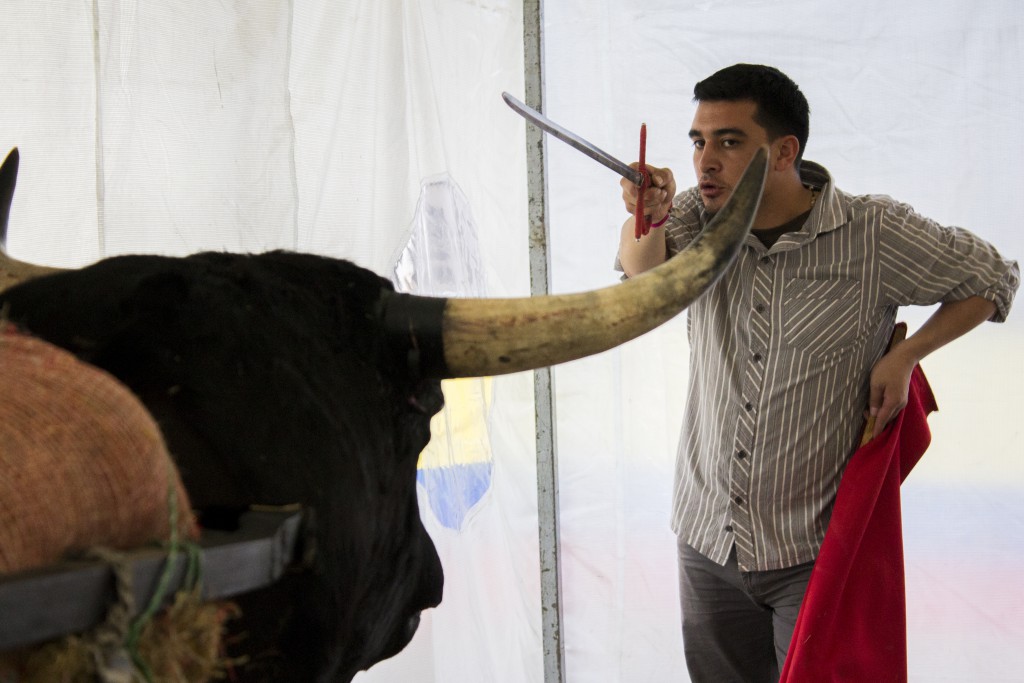
Civilians marched in Chocó waving flags though the intense humidity, demanding healthcare and clean water. Photo: John Vanegas
Agreement reached in Chocó strike action while Buenaventura protests continue following weeks of demonstrations over poor conditions and lack of investment.
Recent weeks have seen demonstrations, violent clashes and strikes along Colombia’s Pacific coast during Chocó and Buenaventura protests. The population of the region is mostly Afro-Colombian, and citizens took to the streets to fight against widespread inequality, demanding infrastructure improvements and that the government meet previous commitments made in 2016.
The demonstrations took place during the month of Afrocolombianidad – supposedly a time to celebrate Afro-Colombian culture – and took root due to what the Afro-Colombian National Peace Council (CONPA) called “a humanitarian crisis that threatens our very existence.”
While the Buenaventura protests continue, on May 27 the government and the leaders of the Chocó protests announced that they have reached an agreement.
The deal, which came after 18 days of civil disobedience, includes commitments to improve the quality of life for Chocó inhabitants, including investment in transport and health infrastructure.
Thousands of people joined the Chocó demonstrations which paralysed commercial activities throughout the department.
CONPA issued an ultimatum to the government claiming that, “the Black, Afrocolombian, Raizal and Palequero [communities] in Colombia are living through a historical and systematic situation of exclusion and racism, which [has recently] developed into a humanitarian crisis and threatens our very existence.”
The campaign group said the civil strikes were called because of the state’s neglect and failure to fulfill its promises as well as a failure to protect and advance their rights “in the face of economic policies and megaprojects that are being imposed in our territories.” They believe such projects plunder natural resources and contribute to the impoverishment of local people.
- The demonstrations took place during the month of Afrocolombianidad – supposedly a time to celebrate Afro-Colombian culture.
- While the Buenaventura protests continue, on May 27 the government and the leaders of the Chocó protests announced that they have reached an agreement.
- Citizens took to the streets to fight against widespread inequality, demanding infrastructure improvements and that the government meet previous commitments made in 2016.
- Recent weeks have seen demonstrations, violent clashes and strikes along Colombia’s Pacific coast during Chocó and Buenaventura protests. Photos: John Vanegas
The government commission headed by Alfonso Prada, the secretary general of the presidency, pledged to invest an initial COP$440 billion in the coming four years towards paving the Quibdó-Pereira and Quibdó-Medellín roads. Significant investments will also be made towards construction and maintenance of hospitals.
He said, “We have listened to the community and committed ourselves to continue moving forward with the development of the social projects that Chocó needs and deserves.”
The ongoing Buenaventura protests, which began on May 16, take the form of civil action. Demonstrations have severely restricted activities in the what is the country’s largest port, preventing the arrival of over 300,000 tonnes of imports and the departure of over 50,000 tonnes of exports.
Transport associations operating in the port say that the strikes are causing losses that total over COP$35 billion so far.
The Buenaventura protests took a violent turn on Friday, May 20, when Esmad anti-riot police fired tear gas on the crowds. At least two people were killed, with dozens more injured. Around 80 people have been detained by the police.
The Esmad police presence has continued, as human rights activist Piedad Córdoba tweeted on May 29, “the Esmad went into Buenaventura like an occupying army, knocking people down, intimidating, terrorising.” One campaigner, Eider Marínez Ortiz, reacted angrily: “How will the problems here be solved by the Esmad assault?”
According to Jaime Alves, research affiliate at the Centre for Afro-Diaspora Studies at the Universidad Icesi in Cali, 64% of the department’s 390,000 inhabitants live in poverty, and most do not have access to drinking water. 62% of the population is unemployed and 42% of the population have been direct victims of the conflict. He believes the problems are exacerbated by a recent increase in paramilitary violence.









